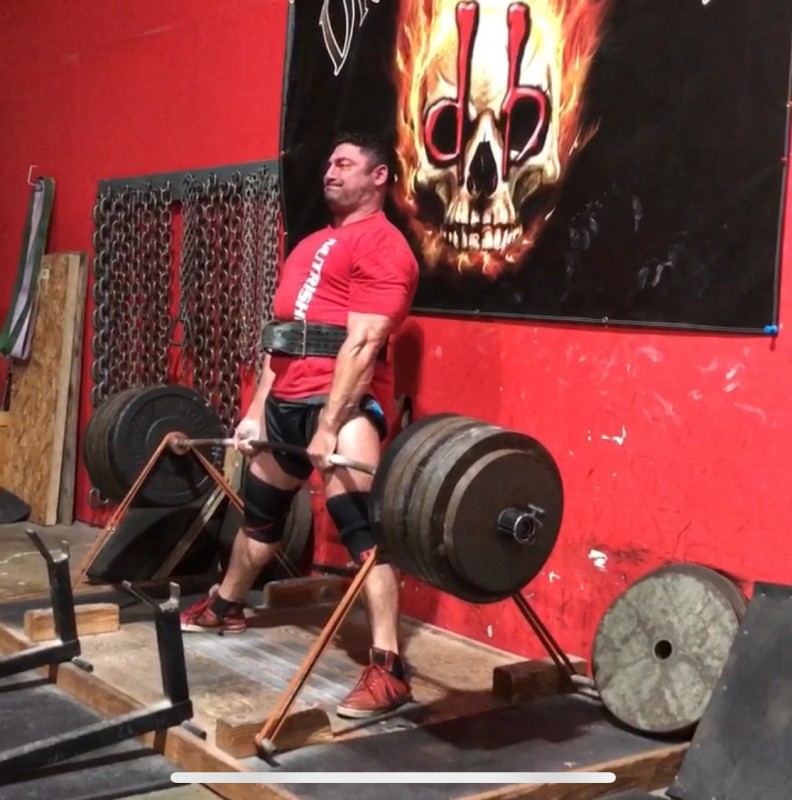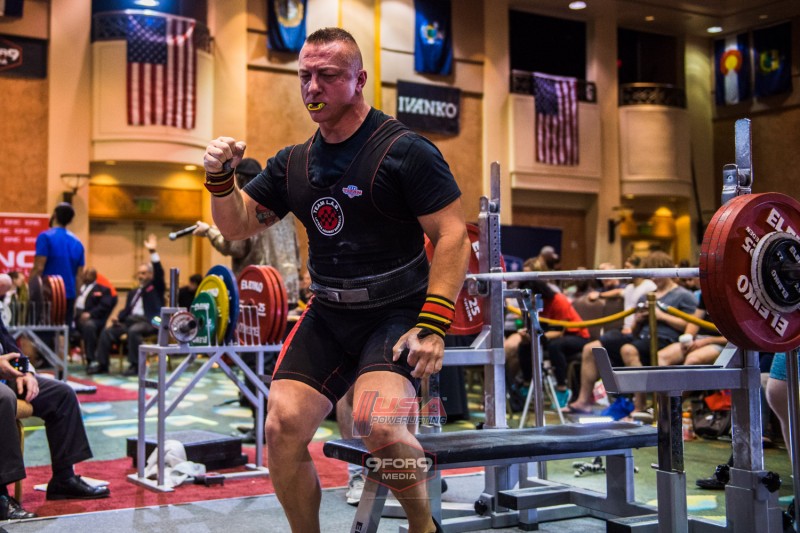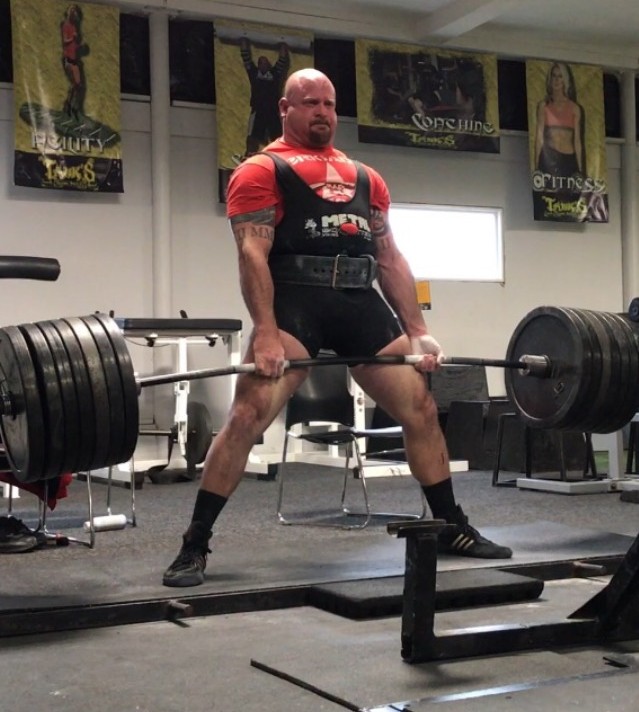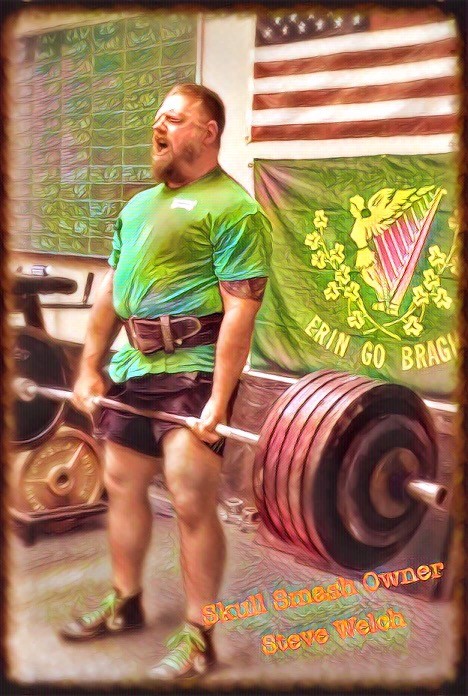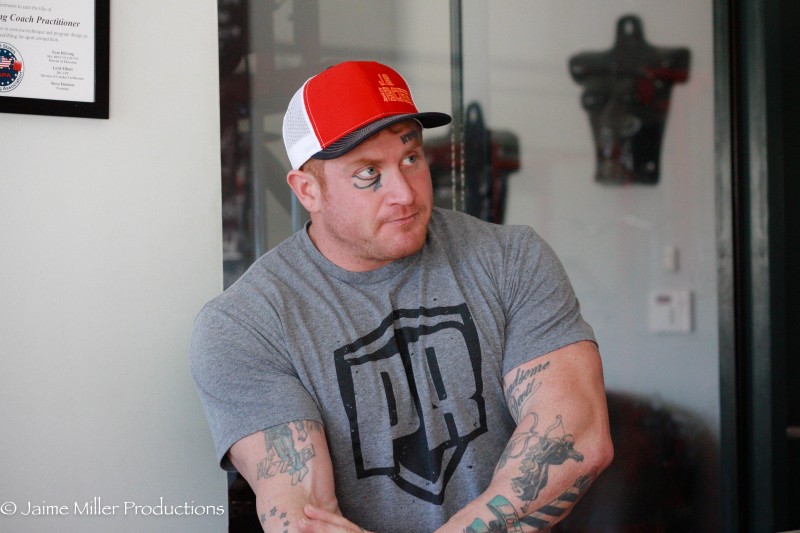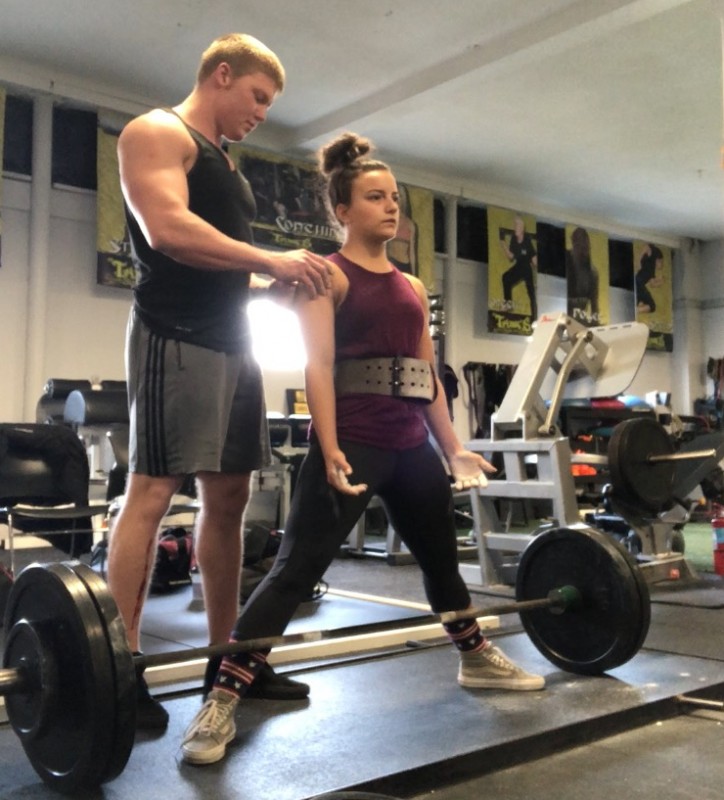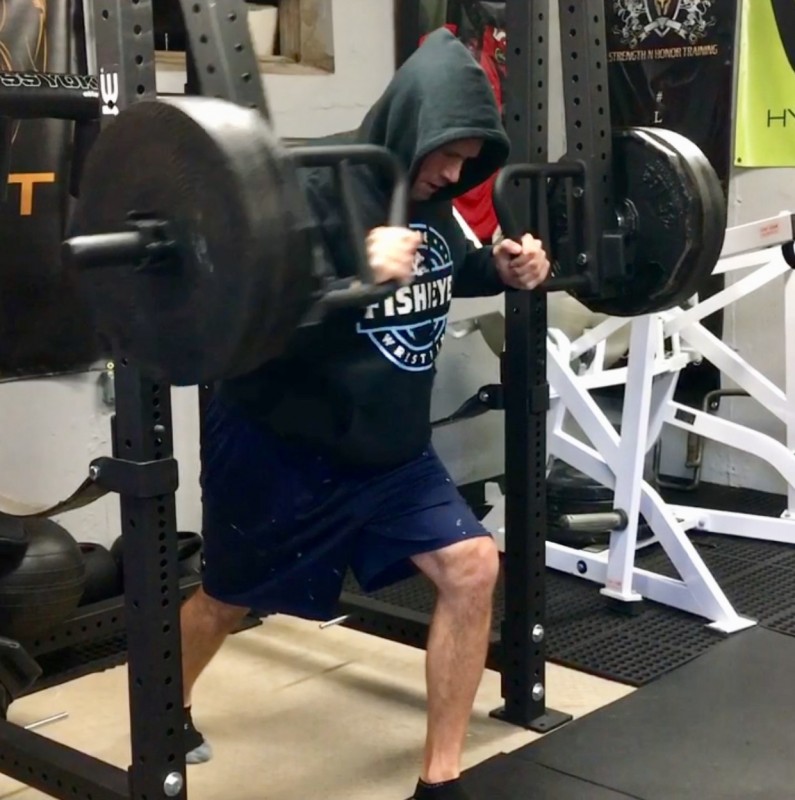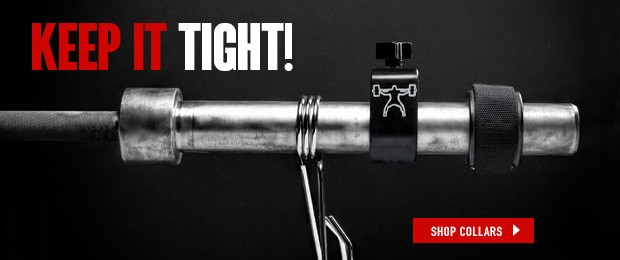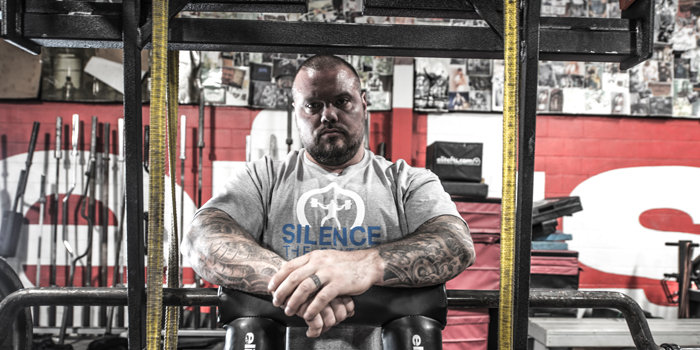
Live, Learn, Pass On is the core of elitefts. Dave Tate has instilled this notion in everything associated with himself and the empire he has built. For this article, I have gathered information from many friends who lift and coach in different parts of the country. They vary in age from 24 to 45 years old and include geared lifters, raw lifters, and coaches of many backgrounds. The various answers and points of view show the diversity of opinions on the topics discussed.
The questions asked to each person include:
- Please give the readers of elitefts some information about yourself.
- What method of training do you follow?
- What is the current state of powerlifting in 2018?
- Who were or are your influencers and role models that have helped shape you and your methods?
- Is there anything else you'd like to share?
Jeff Miller
Geared Lifter, Multiple Federations
I’m a competitive powerlifter, working my way up to the 275-pound. class. To date, my best lifts are a 1003-pound squat, 540-pound bench, and an 800-pound deadlift. When I started at Diablo, I weighed 185 pounds. I squatted 315, benched 225, and deadlifted 445. I’ve been training for about six years, and am hoping to achieve a 2450 total this year. I train using the conjugate method. While you can get results from anything if you put in the work, I feel the conjugate method has the most research and validity behind it. There’s also so much real-world feedback at an extremely high level.
I wish I were around during the time when there was only one federation. Powerlifting seems to be growing as a sport, but I wish the geared movement would come back around. Equipped lifting is extremely challenging with all the variables that come in to play. The powerlifting world is very divisive right now, between geared and raw. My overall perception is that many of the geared lifters respect the raw lifters, but not vice versa. I’m not saying that’s 100% the case, but that’s what I tend to see. Obviously, the majority of raw lifters have never been in gear, thus don’t understand how it works. You hear things like, “I’d bench 700 if I put on a shirt, too”, or “I’d also squat 1000 in a suit." My response: “Okay, let’s try it." At the end of the day, if you’re able to do that, great! But don’t knock it until you try it, as I’d be willing to bet it would humble many people. I don’t want this to sound like I’m knocking raw lifting. I do 90% of my training raw, and I respect anyone who steps on the platform. I’d just like to see people broaden their views.
My mentor and role model is Ted O’Neill of Diablo Barbell. We have a rich history of great lifters, great athletes, and great people. At Diablo, to date, we have 38 elite lifters and have had one of the top female teams in the sport. In our women’s division, we have well over a dozen elite lifters, and the current all-time world record holder in the 105-pound division for the bench (Cosette Neely, who benched 308 at 105 pounds while squatting 424 and deadlifting 336). When someone approaches us about joining the club, 100% of the time we know exactly what can be done for them. What we look for when someone interviews as a prospective member is what can they do for the club.
This gym and the sport of powerlifting have built me not only physically but also mentally. I wouldn’t be where I am right now in business or in life, without them. For that, I will be forever grateful.
Chris Thacker
Raw Lifter, USAPL
I am a 105-kilogram lifter and compete in USA Powerlifting. I was the 2017 M1 Raw National Champion and a 2018 Classic Worlds Team member. I hold the USAPL M1 105 American Squat Record at 292.5 kilograms (which currently ranks as eighth best in Masters of Powerlifting Watch and number one in tested rankings). My best lifts on the platform are a 292.5-kilogram squat, 190-kilogram bench, 282.5-kilogram deadlift, and a 752.5-kilogram total. My best gym lifts are a 325-kilogram squat, 195-kilogram bench, 295-kilogram deadlift,
I am also a managing partner of The Lab Gym in St. Louis, Missouri, where I've been in business for 10 years. It is a Platinum Regional Training Center for USA Powerlifting and USA Weightlifting, and is also a CrossFit affiliate, provides personal training, and is a 24-hour facility. The gym has produced multiple national champions in weightlifting and powerlifting, with athletes competing internationally from youth, junior, open, and masters levels. There have also been several CrossFit athletes compete, in regionals to the games. We have several USAPL and USAW senior national and international coaches on staff. Additionally, I am the USAPL Illinois State Chair and am a meet director, national referee, USAWL LWC referee, and USAPL and USAW certified coach.
I use The Lab's training method. My brother Justin Thacker, founder of The Lab and all-around programming genius, has developed our program through years of his own training as a competitive weightlifter (national and international) and through working with our athletes and clientele. The Lab's libraries of programming options are in the thousands. It covers classic linear periodization, to daily undulating, to conjugate with classic splits, to bodybuilding splits, powerbuilding, weightlifting, powerlifting, strongman and CrossFit. I have gone through various stages of its development over the years.
Currently and for roughly four years, I have been on a daily undulating program and it is very squat-centric. The higher frequency has proven time and time again to be effective for me. A good number of our competitive athletes are on similar formats. Coming from weightlifting roots, frequency being a key element, we have tended to lean towards a more Bulgarian approach. Recovery is always the deciding factor when applying a new stimulus (or more). We have always incorporated both percentages and rate of perceived exertion (RPE) to progress things accordingly. It’s crazy how much people overthink this stuff. Percentages are the plan and RPE is our feedback.
WATCH: Equipment Feature — The Iron Neck and 5 Exercises for Athletes to Perform
The conversation of programming could go on for days. Ultimately, it all comes down to cause and effect. The absolute most important piece of anyone's training is note taking. You have to approach your training like you are about to test a nuclear bomb. Record day, time of day, sleep, recovery, anything pertinent to your warm-up, setup, trials, and errors, etc. — you name it, it’s all relevant. So when you have a successful day, you can repeat it. If you have a not so successful day, you can analyze the data to make an informed decision about what may or may not be working for you. My brother taught me this a long time ago and it is invaluable.
It’s hard to keep up with powerlifting in 2018. As an athlete, coach, national referee, and state chair for USA Powerlifting, I tend to have blinders on to much going on outside of my federation. This isn't because it doesn't interest me. It does, it’s just that I am extremely fucking busy and there are way too many "federations" both on the local or national scale and internationally. I have seen some pop up around me in recent years that I scratch my head and ask why. Why on earth would someone want to start another federation, this late in the game, when we have some very good ones established?
Last year, I started working with a standout teen powerlifter and he was set on competing at some off brand federation's national championships. I looked into it and it was a one-day meet that hosted 60-something lifters the year before, raw and equipped, male and female, with all age categories. My response was, "Sure go ahead. I won't be there and if you get injured competing there, don't come crying to me." I understand that there is a level of competition for everyone and some will be attracted to competing where they stand a better chance of winning—it's human nature—but for fuck's sake, do we really need all of these different options? I think it hurts the sport overall.
Sure, I get the debate of tested versus non-tested, equipped versus raw, and even single-ply versus multi-ply. Being a raw competitor myself, I can honestly say that I would be drawn to a raw with wraps competition. For the record, I have never done one, but the point I am driving at is I don't see the point in all of the crazy "raw" differences. From no equipment whatsoever to borderline equipped, the number of differences is insane and in the end, we are splitting hairs. It’s powerlifting. Set a goal, train for that goal, achieve that goal. If you are doing it for the hardware, you are doing it for the wrong reasons. Besides that, sorry to break it to you, princess, but you're not the strongest person to ever do this or that will ever do this.
For me, I am a fan of humans doing amazing shit (especially in strength sports) and I have an awesome vantage point to witness this, given my involvement with The Lab and organizations like USA Powerlifting, USA Weightlifting, and even, dare I say, CrossFit, because they too are doing some impressive shit. My overall position on the state of powerlifting is this: I got involved in USA Powerlifting years ago because of its reputation as the largest drug-tested federation. In my mind, largest equates to most competitive. Being a big fish in a small pond doesn't inspire me much, but having a shot at being a large-ish fish in the biggest pond? Well, that strokes my competitive nature well.
I see all these different federations and I can't help but think there are far too many people doing this for the wrong reasons — not necessarily the athletes, but those sitting at the table of these different federations. If the rules of performance are the same, for fuck's sake, why would you want to take on the daunting task of starting another federation? Or grind it out trying to help a dying organization? It would be nice to see some unity across all of this, but there are so many varying degrees, it’s hard to keep up with it all.
Regarding role models and mentors, there is my mom, for starters. She's tough as hell, has sacrificed a lot, and has given me opportunities that a poor family from southern Illinois doesn't really have. My mom's husband—rightfully he is my stepfather—has always been a shining example in my life. Dad, too — he never let my brother or me back down from any challenge in life and showed us what hard work was all about. My brother (it should be noted he is my younger brother) always impressed the hell out of me with his dedication. The torture he would endure to add just one more kilo to the bar scared the shit out of me and it took me a long time to actually get the bug for lifting competitively. We have uncles on both sides of the family that were all pretty impressive physically. One side is full of farmers who all worked their asses off. They were all pretty good-sized guys (still are) and they just had a presence in the room that drew respect from those around them. My dad’s brother taught us to squat when we were 11 and nine years old. Anytime we were around him, he was working out it seemed, and we were drawn to it. Some of the first organized workouts with him were 20 rep squat sets.
This brought in all kinds of different role models. I can remember watching The Power Team and thinking those guys were awesome. I didn't get the whole bible and prayers part, but they were still awesome and fed on it. I was also influenced by the World's Strongest Man, the WWF, and every other crazy strength sport that popped up.
Nick Novacich
Geared Lifter, Multiple Federations
I am a full-time police officer and currently number five on Powerlifting Watch's American Best of the Best for the male 275-pound single-ply masters over 40 division. My training style is based on the conjugate method with slight variations programmed in to suit each of my lifter's individual needs.
I believe powerlifting is currently in a strange place that I’m not overly impressed with. There seems to be an influx of moderately strong lifters with big personalities and clown-like antics drawing in and misleading young, impressionable lifters who are new to the game and trying to find their way as a strength athlete. This is predominantly due to a large group of social media heroes constantly posting lifts with very little rhyme or reason to their methods other than to increase their followers. I approach my training in the good old-fashioned way: nose to the grindstone, everyone covered in chalk, most likely bleeding (for a variety of reasons), everyone cussing at each other, and listening to loud-ass music. I promote the philosophy that everyone in my crew is a coach and that everyone better have some thick-ass skin because I want everyone to critique each other (which includes me) and call each other out when someone utilizes bullshit form or cuts a corner just to lift more weight.
I would have to say that coming up in the iron game (of which I am now in my 26th year), I looked up to Chuck Vogelpohl, Captain Kirk Karwoski, Bill Kazmaier, and of course Eddy Coan. I also have a tremendous amount of respect for Louie Simmons and what he has done for the sport of powerlifting. Lastly, I would be remiss if I did not express my respect for Randy Presswood for taking a snot-nosed 15-year-old kid into his crew and teaching him how badass it is to lift heavy shit all those years ago. Each one of these guys was a hardworking, no-nonsense, professional lifter who influenced my lifting as well as my coaching.
I encourage anyone who wants to get stronger to surround themselves with strong people (preferably stronger people) who will push you. Get out of the commercial gyms (if you can) and go find a hole in the wall gym where people have no necks and thick calluses, and work your way into their crew. You’ll be surprised how quickly they take you in if you truly have a passion to get strong and then start learning! If I can be of any help, please feel free to email me at knuckledragger202@yahoo.com or reach out to me on Instagram @knuckledragger202. Good luck and I’ll see you on the platform!
Steve Welch
Raw Lifter, USAPL
I am 43 years old and have been coaching and training people since 1997 (so I’m into my 21st year). I own Max Effort Strength and Conditioning in St. Louis and I own Skull Smash Ammonia Inhalants. I have a degree in exercise science and am a CSCS from the NSCA. While I’m proud of my credentials, much of my knowledge of training has come from spending so much time in the training environment, learning by just doing it and from other experienced coaches.
I have been a drug-free powerlifter for many years, and I can’t remember exactly how many meets I’ve done. I’d guess it to be over 50. I competed in the USAPL my whole career until the past couple years. I’ve also done several ADFPF meets and have competed in the WDFPF Championships four times, three of them being overseas.
I competed raw, but mostly in single-ply for about eight years. My last geared meet was in Scotland in 2013. I’ve decided to go raw ever since. As a gym owner, owner of Skull Smash, and father of two, gear just takes too much time and too much reliance on the participation of others. Besides, as much fun as I had in gear, and as rewarding as it was, I’ve personally always validated my raw lifts to myself to a higher degree than my equipped lifts. So I just chose to be a raw lifter for now.
I don’t follow or use a specific method of training. Something will work for a while, and nothing will work forever, so as a coach and athlete, I find it essential to know how to adapt training methods to get the individual to continue to respond positively to it. I’ve always been critical of methods that are found in books. I think there is some great information written by some amazing people out there, but training out of a book is very limiting and impersonal. Most of the excellent, tried and true “methods” out there, written by intelligent people, have their fundamentals grounded in what has been shown in science and practice to work well for most people. I’d say how I train and coach is like that as well. I’m a big proponent of knowing your athletes and to always keep working on what they need to do next to keep developing towards their goals.
I’m not 100% sure yet how I feel about the current state of powerlifting. I am a lifter. I am a coach. I am a gym owner. I am a sponsor. I am a referee. I am a meet director. I have had my hand in most aspects of this game, even if at just a smaller level. So I have many different perspectives. As someone who has two businesses that are affected by powerlifting (my gym and coaching, as well as Skull Smash Ammonia Inhalants), I’m glad to see booming numbers of new lifters. But there’s also something about these huge, 5000 lifter meets that just doesn’t resonate with the lifter and coach in me. I think the commercialism and control mechanisms you see now in some of the federations are ridiculous. Certain federations are trying to charge equipment manufacturers six-figure fees to allow their equipment to be used in their meets. The hypocrisy of some of the tested federations, and the amount of lifters who are using PEDs in the tested federations is ridiculous.
I think powerlifting is growing faster than it ever has. I just think in some cases and in certain areas, its growing pains are showing in unfavorable ways. I’m hopeful it will level out. I think it’s great to see so many new people getting under the bar and getting on the platform, and I aim to be a positive and helpful part of the future of this sport and lifestyle.
I couldn’t name all the awesome people who’ve influenced me and educated me through the years. I pay great homage to nearly all the old school legends of powerlifting and strength sports. I’m an old school guy and I think in old-school ways. And while there are some badasses amongst badasses making some awesome contributions in the modern era, I still think the best of powerlifting was from the '70s, '80s, and '90s.
Like so many, I watched Ed Coan religiously. Shit, I still do. I even wrap my knees in a method I saw him do. Jason Beck, who was the top 220-pound equipped USAPL lifter for a while several years ago, used to be kind enough to talk to me and give me some advice. We had similar builds and lifting styles, and I just introduced myself to him after he won nationals again. We talked for a while and he gave me a lot of good info. He gave me his contact info and we spoke a few times. I also was lucky to have met and spoke with Paul Wrenn a few times over the years. He was awesome to talk to, and he gave me some awesome advice. He’s one of the most humble people in the sport I’ve ever met.
Locally, I benefited a lot from Bill McDonough and Jeff Lewis. Bill still trains at my gym and I still get good info from him, and I trained with Jeff Lewis for over 10 years until he just recently left my gym. I first met him when he was at the top of the game and had just squatted 1212 and totaled 2800. I picked up a thing or two from him over the years. Like I said, nearly all the old legends in the sport have impacted me in some way.
Steffen Smith
Raw Lifter, Multiple Federations
I live in Springfield, Illinois and train out of Max Barbell Gym. I’ve been lifting for about 10 years, competitively for about seven years. I began lifting for competitions at Chris Janek's facility. I’d drive about two hours to get there because there wasn’t anywhere in my city at the time. It was apparent to me the importance of a team environment, immediately.
I’m a nerd to some extent and enjoy reading and learning the many different methods and approaches to strength training. For me and those I help, the method applied is determined by the athlete’s level of experience, and what they seem to respond to the best. I like western periodization for new lifters. There’s a lot of bar time and we can reinforce technique, as well as teach the importance of the basics and lay a good foundation. For the more experienced lifters, a conjugate or concurrent style has been greatly beneficial; it makes a well-rounded lifter an even better athlete and lifter, and it keeps things from getting stale during training. When communication is thorough between myself and a lifter (some people are pretty terrible about communication), we can apply undulation strategies, which has been great also for strength increases. In my opinion, this is due to fatigue management.
The state of powerlifting is a loaded topic. There are negatives and positives. I’ll just state the positives I see because no one likes a whiner and complainer. The sport has certainly changed since I started, and I’d say that I caught the tail end of the pre-internet and social media age. The meets are larger now, and I’ll say they fill up faster too. This is great. It’s undeniable that the “breed” of lifter has changed as well — not necessarily a terrible thing, just an undeniable change. One of the appeals to the sport when I first started was that I felt like I fit right in. You still had to earn your spot and earn respect before it was handed to you. This thinned the herd, so-to-say, and certainly served a purpose.
The internet has helped make the sport exponentially more popular, which means bigger events and more doors opened in the form of opportunities for lifters, businesses, and companies that support, contribute, and work in the industry. There are a lot of freaks coming out of the woodwork, so it’s always cool to see up and coming talent that may not have been discovered previously due to a lack of popularity. I think equipped powerlifting will come back sooner than later. I’ve already noticed an increase in single-ply from newer lifters who want bigger numbers. I believe multi-ply will also experience a resurrection too; if not due to desire solely, it will be curiosity or to try something new. Across the board though, powerlifting in 2018 is looking good. There are plenty of federations, meets, and gyms to choose from. There are also a lot of companies supporting the meets. Right now, I think it’s a pretty sweet spot for the sport.
When it comes to the people who have influenced me, I like the coaches who make already strong people stronger. Regardless of method or strategies, these people have produced continual results, not just the initial strength increases anyone would experience if they started training. I like Boris Sheiko, Louie Simmons, and Josh Bryant. I also really like a lot of the content John Meadows puts out; I really like his creativity with exercises and his nutritional content is great as well.
If you’re a new lifter, learn technique and drill it, and drill it, and drill it. You’ll spend more time fixing things later than you will learning and developing proper lifting now. The strength will come. Don’t be so impatient. Records are records because they are the best performances of all time. Don’t disrespect the record holders by thinking you’ll achieve in four months what took many years and years. Don’t quit. You will get better and you will get stronger. It’s okay to ask questions, and don’t be afraid to learn something for yourself. In the gym and in the books or the internet, there are great resources available.
Tyler Jennings
Raw Lifter, Coach, Multiple Federations
I am 24 years old and have been lifting consistently for 10 years, with the last three more geared toward strength and powerlifting. I coach out of Tank's Training facility in Granite City, Illinois. I use conjugate style training, with a huge emphasis on technique and efficiency.
In my opinion, the current state of powerlifting is good and growing. Raw is the big thing right now, but I think we will see an increase in curiosity on the geared side of things this year, with the Westside film coming out. Overall, the sport is growing. There are more meets, more people, and more records being broken often. I think it’s in a good place and will continue to grow. The role models and influences that have helped me shape my training methods include Louie Simmons, Randy Presswood, Nick Novacich, and Chris Duffin. Being at the facility I am, I’m with guys that have been in the game over 30 years, so it's amazing to see the ideas and methods of these other coaches
Some advice for anyone in the sport or new lifters entering the sport is to never stop learning, never stop improving, and never stop growing. Always be open to advice, tips, or tricks from other coaches. But don’t overcomplicate things. Find out what works for you or your athletes and build on that. No two people are the same, so do what works for you. The best advice I can give is to, if possible, get out of the commercial gym and find a local gym with likeminded people and learn from them, even if you have to drive an extra 45 minutes. I can assure you it will be worth it.
Steve Konopka
Coach, Facility Owner
I was born and raised in Hartford Connecticut and now reside in Simsbury, Connecticut with my amazing wife Robin and my two savages—I mean boys—Maximus, nine, and Jaxson, five. I’m 42 years old now (crazy when I say that out loud) but still can get after in the gym, set a good example, and keep up with my two boys, which is the most important thing in the world to me. I grew up playing every sport in the world anytime I could. After high school, I went and played football at Central Connecticut State University, a Division I-AA team, and from there had a shot in the NFL with the New York Giants in 1999. That season it didn’t work out for me and I was released from the team, which was probably one of the biggest learning experiences in my life and it still affects me today in a positive way.
The next best thing for a football player in 2000, financially and opportunity-wise to get back into the NFL, was the Arena Football League (AFL). Playing eight awesome seasons in the AFL, I was going into what I thought would be my last two-year contract. I already started setting up my transition into post-football life and two days before training camp I got into a bad car accident. Long story short, football was done and my original plans for Strength N Honor Training facility, which I had started the build out for, were done. Battling the injuries from the accident and dealing with the end of football for me was tough. I came through on the other side but in a whole different lifestyle than I ever thought I would be in.
This was the first time in my life I wasn’t around athletes, teammates, or people that had a tough physical work ethic. To be honest, I let them make me soft, and that was on me. My first son being born got me training again with consistency. I didn’t want to be the dad who “used to be this" or "was once that.” I had to make sure he saw the correct lifestyle, in my opinion, to live. Once my son turned five and started wrestling and playing sports, I started helping out with coaching. The longer I was around, the more injuries and weaknesses I would see, especially with the middle school and high school kids. So I just started helping out kids here and there with suggestions for stretching, exercises and rehabbing. Next parents were bringing kids by to get stretched out, to learn how to squat, and to help rehab a tweaked ankle.
It was awesome. I loved helping young athletes out and it got my fire burning again! With my football background, the kids listened and applied what I told them more so than others. So after about two or three years of this, it got to the point where I realized I could help more young athletes and prevent a lot of these issues they were having if I started training them earlier on and properly. So part time after my normal job, I opened up my own studio of about 500 square feet. Strength N Honor Training Facility was born again, six years after it was derailed by the accident. The methods I use are influenced by Westside Barbell and the conjugate method, but unless you train at Westside you aren’t doing Westside, right?
Powerlifting right now seems to be shifting a lot more into raw lifting. I think it’s good for the sport; it makes it easier for people to compete in meets. It could spark more interest and people can move into the shirts and suits if they really want to go after something further.
For mentors and role models, in high school, Arnold’s Encyclopedia of Bodybuilding had a huge influence me. Even though for sports I probably should have been training totally differently, it made me attack the gym. In college, we did not have a strength and conditioning program really, and we did not have strength and conditioning coach at all. I was crazy for that level of football, even back then. I just kind of followed anything I could until I started training at a World's Gym and an older Russian powerlifter took me under his wing. He told me to call him Roman and, I'm ashamed to say, I forgot his last name. He was about 15 or 20 years older than me and he had two other guys with him. Their English was almost non-existent but they were strong as hell and got me off that stupid Smith machine and squatting and deadlifting some serious weight. The tips they gave me saved me years of mistakes. I was very fortunate to train with them that one summer. The last 10 years or so Zack Even-Esh and Joe DeFranco have been staples in my type of training and methods.
My advice to all lifters is to keep pushing towards your goals no matter what. Make no excuses. If you’re in Connecticut and you need a spot to get after it, hit me up!
I have met and spent time with every person who contributed to this article, either many years ago or recently. As big as this industry is, it's cool to see how many similarities there are between perspectives, despite people being on different sides of the country and having different backgrounds. Everyone that gave their input in this article is friendly enough that you could contact them directly with questions. If you need a place to train, I'm sure they would accommodate you. Even if you don’t follow exactly what they do and believe exactly what they believe, if you have picked up a couple new ideas or if this article made you think about your own training in a different way, it was beneficial to you.
Feel free to give feedback and we will answer any questions or help you out in any way we can.










